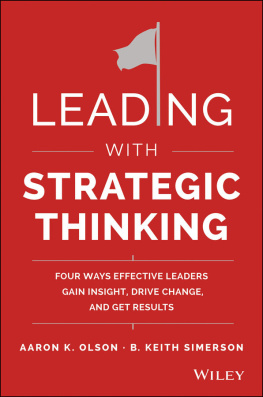Y our perception of leadership as a concept is shaped by the people around you. These people are often parents, grandparents, or older brothers and sisters. You might think of a teacher, coach, religious figure, or police officer. Many people look to historical and political leaders for inspirationGeorge Washington, Henry Ford, Eleanor Roosevelt, Kamala Harris... the list is endless. All of these people, from your parents to the president, are in a position of leadership for several reasons. Leaders have goals. Some, like your parents, likely want you to become the best person you can be. Some, such as teachers, want to help you get an education. Others want you and your peers to live healthy, happy lives. Regardless of the person or the goal, leaders are people who assist us, guide us, and help us achieve success.
Leaders have qualities that make people want to follow them and abilities that allow them to manage people successfully. A leader is a person who has a visionan idea of how things can be as well as the drive and commitment to achieve that vision. But leadership involves much more than a vision. Leaders also know how to organize people and resources to make their vision a reality. They know how to motivate group members and keep them working together to reach a goal. A business leader needs excellent communication skills to relate successfully with workers, clients, vendors, and many others. A leader must be able to express their vision and must be able to clarify for others what their role is and what needs to be done to achieve the groups goals. In addition, they must be able to talk to members of the group in a way that motivates them to believe in the groups goals and work toward achieving them.

Effective leaders need a list of skills to keep people content and motivated. This includes excellent verbal skills, conflict resolution, fairness, firmness,and so much more.
Some people are thought to be born leaders. They often have relationship skills needed to make people happy and help others work as a group. However, even natural leaders were not born that way. One of the most common ways to learn leadership skills is to observe effective leaders. As children, they may have learned leadership skills from their parents, by observation, or through their personal experiences, but the fact is that they did learn how to develop those qualitiesand you can too.
This book explains the qualities that make a person a leader, as well as how to develop these qualities and use them to successfully manage groups and achieve goals. Being a leader is not easy. It requires a lot of dedication and the ability to deal with a wide variety of people and problems. However, the rewards of developing these abilities are numerous. The qualities that make one a leader can allow you to realize your goals and those of the groups youre involved in. They can make you more successful in school, in sports, at a part-time job, and in other activities that matter to you, including clubs or charities. They can also make you more successful in future activities, such as college or a career.
At this point, you need to ask yourself: Do I have what it takes to be a leader?
CHAPTER 1
YOU DOHAVE WHATIT TAKES
W hen you hear the word leader, what comes to mind? You might think of a superhero from an action movie. You might think about a parent or another family member, or you might think about an employer or a boss. All of these are possible examples of leaders in our lives. Superheroes may not be real, but characters like Iron Man and Wonder Woman can teach us about the ideal qualities of a good leader. However, we can learn these qualities from the real people in our lives as well. So, what are the qualities of a great leader?
COMMUNICATION IS KEY
Successful leaders know how to communicate well with others. This other could be a friend, an employee, a delivery person, a disgruntled customer, or so on. Leaders need a range of communication techniques; verbal communication, body language, and attitude all play a role in communication.

Most industries have their own sets of jargon that workers understand. However, its still a good idea to explain things as simply as possible to avoid confusion.
Good communication is well planned, clear, to the point, and easy to follow. Start by thinking about your audience. Is it group members who speak the same language about the subject at hand? School officials? Local businesspeople from whom youre trying to obtain sponsorship or donations? Next, outline your key points so that you can cover them in an organized manner that will be clear to your audience. Make sure that the language you use is appropriate for the audience to whom youre speaking. When you talk to an audience of community members, your language should be more formal than when talking to your friends or family. Regardless of your audience, your language should be grammatically correct. This helps get your points across clearly and without ambiguity. Avoid using jargon when you communicate. Jargon consists of specialized terms used within a particular group, hobby, business, industry, or field of study. The members of your audience may not be familiar with specialized terms, and they can cause confusion rather than projecting leadership.




















